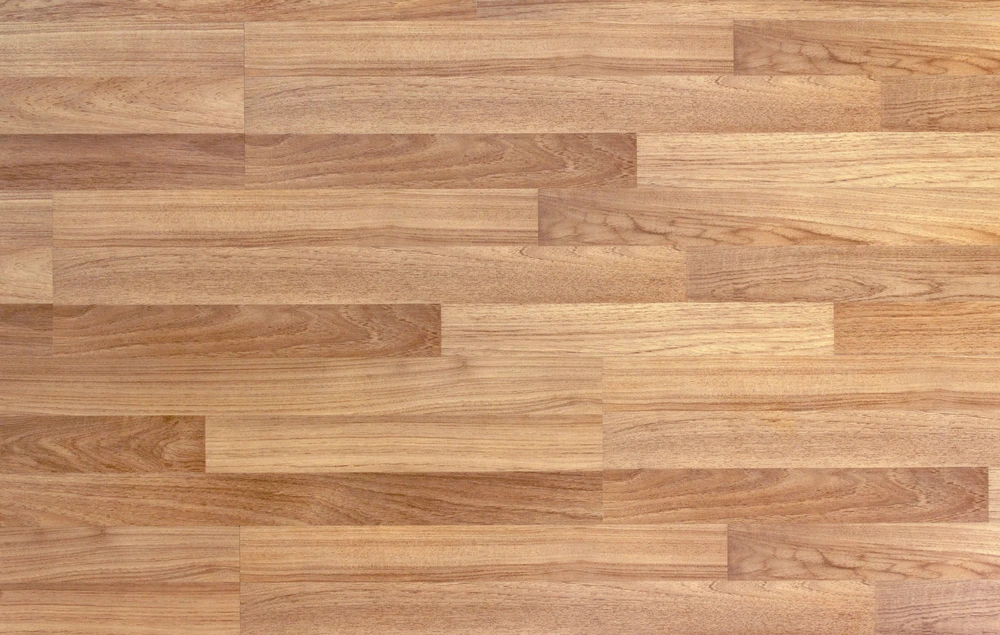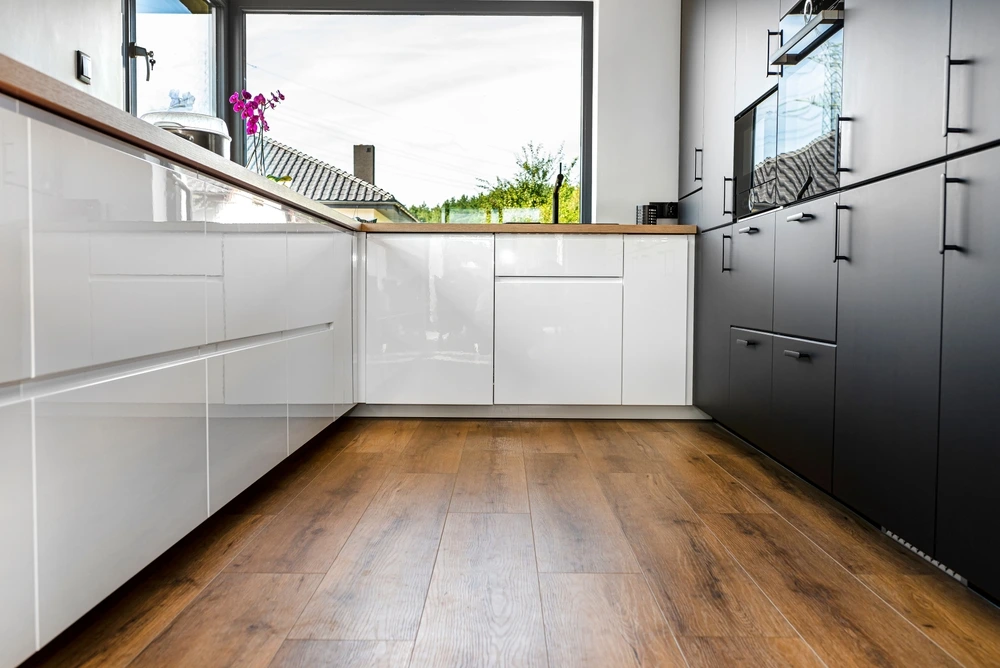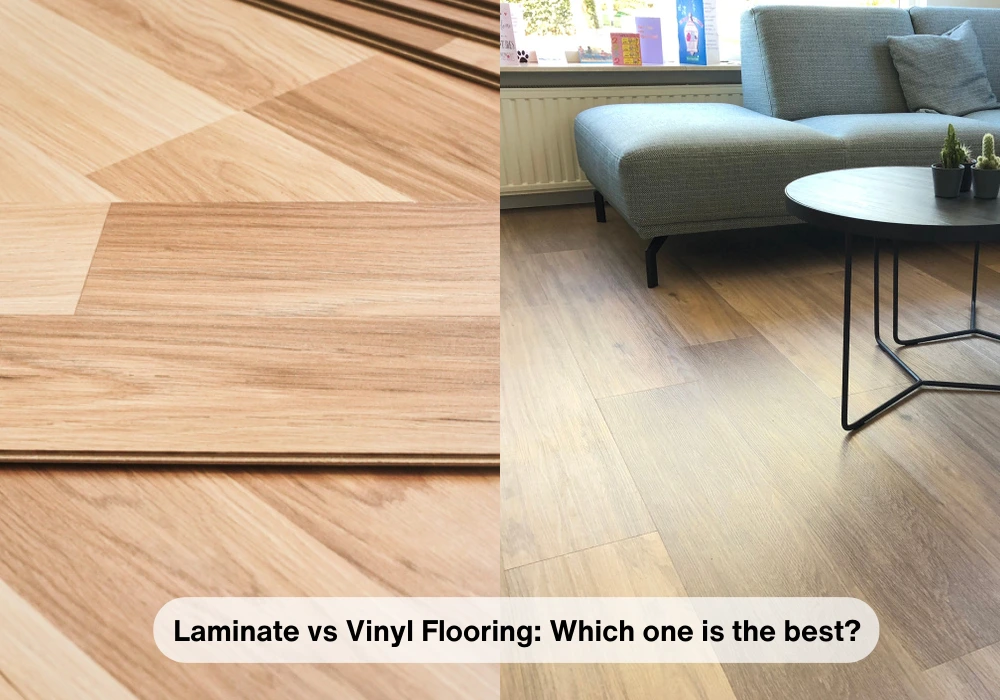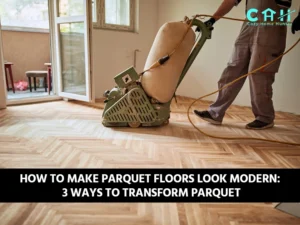If you are in the market for durable and chic yet surprisingly affordable flooring options, you have definitely come across the two A-listers: laminate and vinyl. These two are in such a head-to-head competition with each other that you would think they are the same thing with only different names.
But obviously, any flooring expert will tell you otherwise. Vinyl and laminate differ in every way, from how they are made to their external properties. And sure, there is an ideal time and place for each. But the real question comes down to: laminate vs vinyl flooring, which is the best for you?
Join us as we dissect these contestants across 13 distinct categories. Our mission? To resolve the age-old debate definitively: Laminate vs Vinyl – Which stands as the best choice?
Table of Contents
Laminate vs Vinyl Flooring: A Quick Guide
Welcome to your express guide for a head-to-head comparison between laminate and vinyl flooring options. We’ve handpicked the top 13 sought-after flooring attributes for this quick comparison.

What is Laminate Flooring?

You probably know this already, but before we dive deeper into the vinyl vs laminate debate, let’s get to know these two popular flooring options better.
Laminate flooring is a multi-layer synthetic product that fuses together using a lamination process. Its inner core generally consists of melamine resin and fiberboard materials that deliver durability and strength. The top layer of laminate is an embellished, transparent photographic applique layer simulating the look of real wood or stone. This is then covered with a transparent protective coat to resist damage.
Laminate is available in a wide variety of styles, mimicking different textures and real hardwood and tile finishes such as oak, maple, cherry, mahogany, and pine. It can be smooth, textured, or embossed to accentuate the look and feel of the natural material it represents.
In terms of grades, the quality of laminate flooring can be assessed based on its AC (Abrasion Class) ratings. These ratings range from AC1 (moderate residential use) to AC5 (heavy commercial use), so you can choose a laminate grade suitable for your specific needs.
What is Vinyl Flooring?

Ideal for both homes and businesses, vinyl flooring is made up of several tiers. These include a foundational, visually appealing design layer and a durable, transparent wear layer. The synthetic blend used in vinyl flooring consists of substances such as PVC, phthalates, and a range of additives. This combination results in a long-lasting and visually pleasing product.
Now, the variety game is also strong with vinyl. You’ve got your planks that look just like hardwood, tiles that mimic ceramic or stone, and even sheet vinyl for that seamless look. The best part? Installing vinyl is a breeze. You can choose between peel-and-stick, click-lock, or glue-down options – whatever suits your DIY skills.
Laminate vs Vinyl Flooring: Which one is the best?

Now that we are familiar with vinyl and laminate flooring, let’s compare and see who shall win the race.
1. Appearance & comfort: Which looks and feels the best?
Laminate: Laminate can mimic the look of real wood, stone, or tile with jaw-dropping accuracy. The high-definition printing technology used in laminate manufacturing gives you all the aesthetics of natural materials without the hefty price tag. So, whether you dream of a rustic oak living room or a sleek marble kitchen, laminate’s got your back.
But what about the comfort level? Laminate is all about that cozy feel underfoot. It’s typically warmer than stone or tile, so you can strut your stuff in socks all year round without freezing your toes off. Plus, many laminate options come with an underlayment that adds extra cushioning, making it super comfortable for those marathon cooking sessions or Netflix binges.
Vinyl: Thanks to advanced printing technology, vinyl planks, and tiles can mimic the textures, grains, and patterns of natural materials so convincingly that even Mother Nature would do a double-take. Want that rustic oak look without the maintenance hassle? Vinyl’s got your back.
Now, let’s talk comfort. Vinyl is like a cushy hug for your feet. Vinyl offers a gentle and warm touch underfoot. Plus, it’s softer, which makes it easier on your joints – a win for anyone spending hours standing or walking around at home.
Winner: A perfect tie between laminate vs vinyl flooring for appearance and comfort.
2. Laminate vs vinyl flooring: Which one will last longer?
Laminate: Laminate flooring typically comes with warranties ranging from 10 to 25 years. But in reality, the actual lifespan largely depends on its maintenance. Although it has a tough exterior, laminate is highly susceptible to water damage, which will shorten its lifespan significantly.
Vinyl: Vinyl usually comes with warranties ranging up to 20 years. The durability of vinyl largely depends on its thickness, as the thicker core offers it more protection against external forces. Thicker vinyl can last up to 25 years or more, while the thinner varieties last only 10 years.
Winner: Vinyl takes the lead for a longer lifespan. Although laminate and vinyl have a similar expected lifespan as long the laminate is kept dry and well-maintained, vinyl has a slight edge over laminate in this aspect as it is not susceptible to water damage.
3. Laminate vs vinyl flooring: Cost comparison
Laminate: Comparatively, laminate can be a touch more expensive than vinyl flooring, with prices fluctuating between $1 and $5 per square foot. The pricing typically depends on the thickness of the laminate. The textured 12-mm thick planks can cost you $5 to $8 per square foot. Also, designer laminate will cost you more than the usual price bracket.
Vinyl: The pricing for vinyl flooring can range from $2 to $8 per square foot, largely depending on the variant purchased. Sheet vinyl is the cheapest, from $0.50 to $2.00 per square foot. However, this cost is balanced out by the costlier installation.
Winner: Vinyl planks and laminate are comparable in their pricing. Both are ideal for DIY installation, bringing down the cost even further. Sheet vinyl is the cheapest but costs more for installation.
However, we still vote vinyl as the winner for offering the more affordable options.
4. Water resistance in laminate and vinyl
Laminate: Laminate has a fiberboard core, and we know what that means—no water resistance! Since laminate has a wooden core, it will swell and soften when exposed to water and won’t go back to its original shape even if it is dried thoroughly. This is why you need a vapor barrier to install laminate over concrete.
When water pools on the surface, it can work its way below the planks through the seams and ultimately reach the core. Although the wear layer offers some level of protection to the layers underneath, it can sometimes peel off if the core is damaged. And once the laminate floor is severely water-damaged, you have no other option but to throw it away.
Vinyl: Vinyl is essentially plastic, which gives it a natural immunity to water and makes it way more water-resistant than laminate. Most vinyl floorings are entirely waterproof, not just on the surface but also on the edges and the bottom. Even if vinyl planks come in contact with water, you can simply dry them off, and they will go back to their original dimensions.
One thing to keep in mind about waterproof vinyl plank flooring is that they are not floodproof. Although most people use the terms waterproof, water-resistant, and floodproof synonymously, in reality, they are vastly different from each other.
Click here to learn more about waterproof vinyl plank flooring.
Winner: Vinyl takes the crown for water resistance!
5. Maintenance & care for laminate and vinyl
Laminate: Maintenance is a strong suit for laminate as they don’t require wax or polish like hardwood. However, as laminate cannot stand water for too long, daily cleanings should only be limited to dry mopping, sweeping, and vacuuming. You can use a damp mop or laminate cleaner for deeper cleaning on areas that need it.
Also, the repair options are pretty limited with laminate. If you get deep scratches or moisture damage, you need to replace the laminate board individually.
Vinyl: Vinyl is as low maintenance as it gets. You can even mop it with water! You can use any cleaning methods for vinyl as you prefer except for using too abrasive sponges or cleaners.
However, vinyl plank flooring is extremely difficult—if not impossible—to repair. So much so that the only option you are left with is to yank it off and throw it away if it ever gets damaged. Although there are ways to remove light scratches from LVP and make them look new again, they work only up to a certain extent. If the damage reaches the design layer, there is not much left to do but to say goodbye to your flooring.
Winner: Both are impossible or hard to repair once damaged. But vinyl is easier to clean and care for.
6. Heat resistance and compatibility with radiant heating in laminate and vinyl
Laminate: Although the fiberboard core handles heat exceptionally well, the top layer will melt off if you drop something extremely hot on it. But these temperatures aren’t typical in households, so not something you should be worried about.
As for compatibility with radiant heating, the thinness of laminate makes it an excellent choice for underfloor heating, as it can transfer heat to the surface almost instantaneously. However, laminate flooring cannot handle very high heat — meaning you can run your heating only up to a safe temperature (recommended 85 degrees Fahrenheit) to avoid heat damage.
Vinyl: Vinyl flooring, like any other plastic, can indeed be impacted by heat. However, it’s worth noting that most vinyl flooring products on the market adhere to heat specifications that far exceed typical daily usage temperatures. These specifications often reach as high as 158 degrees Fahrenheit, providing a substantial buffer against the heat generated in regular day-to-day activities.
Additionally, vinyl is safe to use with radiant heating systems. Vinyl planks are crafted from a blend of materials, including PVC (vinyl), fiberglass, plasticizers, and a slim print layer on the surface, occasionally supplemented with cork or foam backing. All of these materials tolerate heat well up to 85 degrees Fahrenheit. However, depending on the manufacturer and the prints, keeping the heating below 80 degrees is recommended to prevent color degradation or shrinkage.
Winner: Laminate wins the race in this lap! Laminate and vinyl both have similar heat resistance and are compatible with radiant heating. But laminate floors may conduct heat more effectively than vinyl.
7. Scratch resistance in laminate and vinyl
Laminate: Laminate flooring is generally scratch-resistant, thanks to its tough top layer. While it can handle daily wear and tear well, it’s not entirely impervious to deep scratches from sharp objects. But with regular maintenance, scratch is one less thing you need to worry about with laminate.
Vinyl: The sturdy vinyl wear layer is very hard to scratch, making it pet- and kid-friendly. However, if you drop a knife or a 20 lbs. dumbbell, no wear layer can save your floors from damage.
Winner: Tie—both resist scratch quite well.
8. Which one is easier to install?
Laminate: The installation process for laminate flooring can be relatively simple, making it a popular choice for DIY-minded homeowners. It uses a tongue-and-groove system that allows the planks to be snapped together. This method, known as a floating-floor system, doesn’t require glue, nails, or staples, so your existing floor won’t be damaged during installation. Laminate can be easily cut using standard handheld tools to fit around obstacles in the room.
Click here to learn more about the disadvantages of floating floors.
Vinyl: Vinyl flooring also uses a click-and-lock method that you can simply lay over a smooth, clean subfloor. It can even be installed over an existing floor if the surface is deemed suitable. However, the vinyl sheet is slightly more difficult to handle as it needs to be precisely cut to fit the area. So, hiring professionals is recommended.
Winner: It’s a tie if you compare laminate to vinyl planks. However, the installation process is a lot more complicated if you are using sheet vinyl.
9. Sound insulation in laminate and vinyl
Laminate: Laminate is a hard type of flooring—and similar to timber flooring, laminate doesn’t have excellent sound-insulating properties. Without proper soundproofing, laminate flooring will echo both airborne noise and impact noise.
Vinyl: Like laminate, vinyl is also a hard surface material that reflects and echoes sound waves, a.k.a. not so great at insulating sound. But some vinyl flooring comes with a thick underlayment or backing material that helps dampen the noise.
Winner: Vinyl due to its underlayment and thick backing material.
10. Environmental impact of laminate and vinyl
Laminate: Laminate flooring can have an environmental impact due to its production process. However, many manufacturers have committed to more sustainable practices, including using recycled materials in the core layer. Moreover, because laminate does not involve the felling of exotic trees or the mining of stone, it can be considered a more eco-friendly option than other types of flooring.
Vinyl: Vinyl plank is essentially plastic, meaning it’s not eco-friendly. Most of these floorings cannot be recycled or decomposed and will add to the existing landfills. Also, since LVP is nearly impossible to repair, they are more likely to end up in landfills.
However, one might argue that the long lifespan of vinyl makes it relatively sustainable. And with that, we agree. But there are loads of environment-friendlier flooring options that you need to check out if this concerns you.
Winner: Neither is environmentally friendly, so we consider it a tie.
11. Stain resistance in laminate and vinyl
Laminate: The top layer of laminate is an aluminum oxide layer that resists stains.
Vinyl: The transparent urethane layer that sits on top of vinyl gives it excellent stain-resisting properties.
Winner: Tie—both are stain-resistant.
12. Installation areas: Which goes where?
| Installation Areas | Laminate Flooring | Vinyl Flooring |
| Kitchen | Not recommended | Yes |
| Bathroom | Not recommended | Yes |
| Hallways | Yes | Yes |
| Bedroom | Yes | Yes |
| Dining room | Yes | Yes |
| Living room | Yes | Yes |
| Basement | No | Yes |
| Laundry room | No | Yes |
Winner: Vinyl—works well in almost all areas.
13. Laminate vs vinyl: Best choice for pets?
Laminate: Laminate is scratch and stain-resistant, which could make it a pet-friendly choice if it wasn’t for its lack of water-resisting properties. Pets are bound to have mishaps every now and then. If an accident were to occur on the laminate, you need to clean it up as soon as possible, which is an inconvenience. Also, the slick surface might not be suitable for older pets.
Vinyl: Vinyl is an excellent choice for your furry friends as they are scratch and water-resistant. Also, vinyl has a non-porous surface. So, it won’t absorb any of the “little mishaps” your cat or dog might have on the floor. You also won’t have to worry about lingering odor as long as you find the spot and give it a good wipe-down.
Winner: Vinyl for scratch and water resistance.
Laminate vs Vinyl Flooring: The winner
We embarked on a comprehensive analysis, pitting laminate against vinyl and assessing the top 13 desirable flooring attributes. In this battle of laminate vs. vinyl, the results speak volumes. While the scorecard revealed 5 draws, vinyl emerged victorious in 7 categories, with laminate securing only 1. Thus, the crown goes to vinyl.
However, let’s not forget the real-world nuance. Both these flooring contenders bring unique strengths that defy quantification. Ultimately, the choice rests with you, the one who will live with the decision. Your preference, lifestyle, and aesthetic sensibilities should guide this flooring quest. It’s not just about which is better in theory; it’s about what’s best for your reality.






